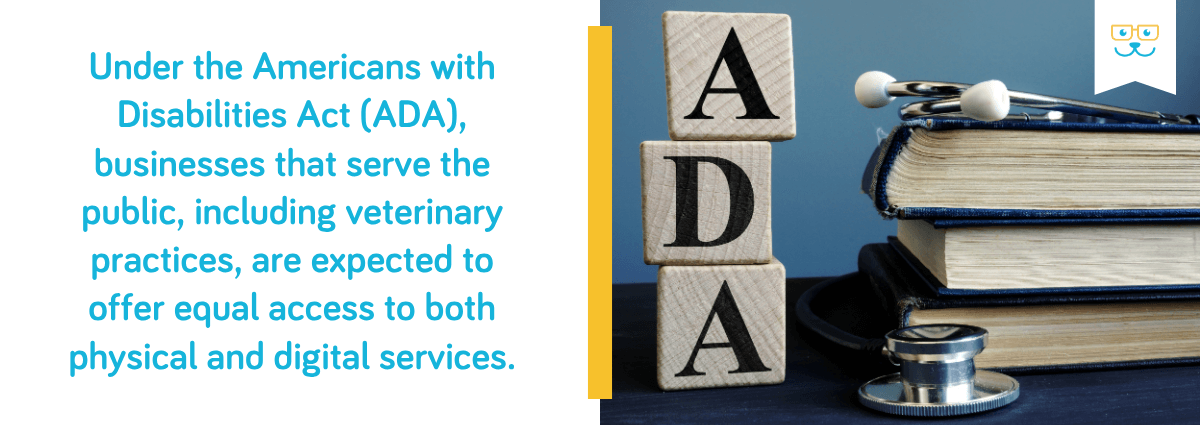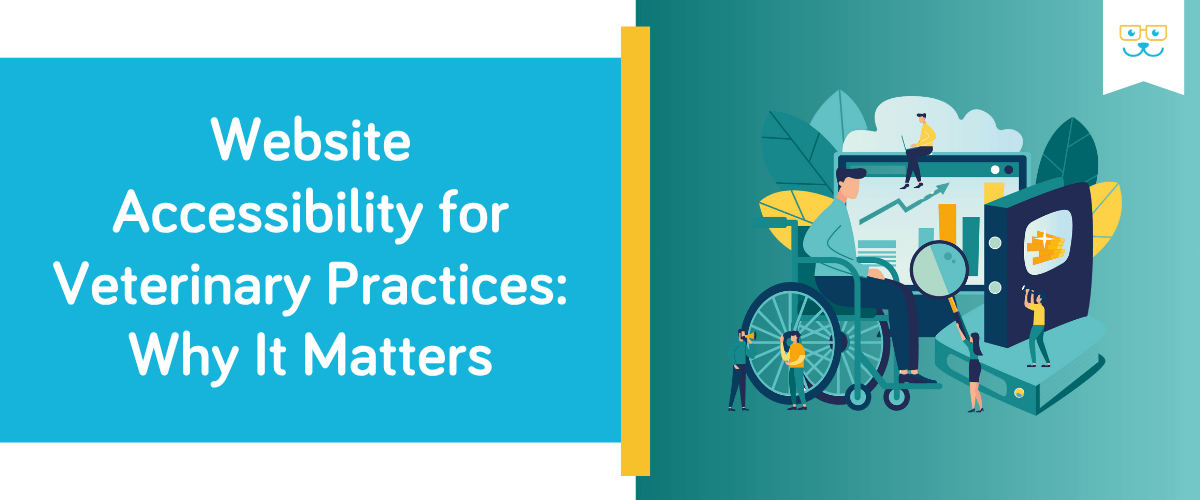Website Accessibility for Veterinary Practices: Why It Matters
When you think about making your veterinary practice more accessible, your mind might jump to things like ramps, wider doorways, or service animal policies. All of those are incredibly important. But have you considered your website's accessibility?
Your website is often the first interaction pet owners have with your practice. Just like your physical space, your digital presence should be welcoming and usable for everyone, including people with visual, auditory, cognitive, or motor impairments. That is where website accessibility comes in.
Let’s take a closer look at what website accessibility means in the digital space, why it matters for veterinary practices, and how you can make sure your site includes every pet parent.
What Is Website Accessibility?
Website accessibility means building and designing your site in a way that makes it usable for people with disabilities. This includes making sure:
- Screen readers can navigate the content.
- Text has a strong contrast to improve readability.
- Menus and forms can be used with a keyboard.
- Images have descriptive alternative text for assistive technology.
- Videos display captions for those with hearing impairments.
In short, accessibility ensures that all users, regardless of ability, can find your practice online, understand what you offer, and take the next step in scheduling care.

Why Veterinary Practices Should Care About Website Accessibility
1. Inclusivity and Compassion
As a veterinary professional, you offer compassionate care to every pet that comes through your door. That same mindset should extend into your digital waiting room, or in other words, your website. Making your website accessible ensures that all people feel welcome and supported, especially those who may already face barriers in other parts of life.
An accessible website reflects kindness, professionalism, and understanding right from the first click.
2. Legal Compliance
Accessibility is no longer just a bonus feature. Under the Americans with Disabilities Act (ADA), businesses that serve the public, including veterinary practices, are expected to offer equal access to both physical and digital services.

Thousands of businesses have already faced lawsuits for inaccessible websites. While the veterinary industry has not been heavily targeted yet, it is smart to prepare now. Making your website accessible helps reduce legal risk and shows that your practice is forward-thinking and inclusive.
3. SEO and Website Performance
Many of the same features that improve accessibility also help with your website’s search engine optimization (SEO). For example:
- Clear headings and an organized page structure allow visitors and search engines to find what they need.
- Descriptive alt text supports accessibility and boosts image search rankings.
- Mobile-friendly layouts and fast page loads improve the overall site experience.
A website that is easy to use and easy to find benefits everyone who visits it.
4. Better Experience for All Users
Accessibility helps more than just those with permanent disabilities. Think about pet parents scrolling on their phones while juggling kids or a leash. Features like larger text, intuitive menus, and fast-loading pages make your website more enjoyable for everyone. When your site is easier to use, it is more likely to convert visitors into clients.
How to Make Your Veterinary Website More Accessible
You do not need to be a web expert to start improving your website. Here are some simple steps you can take:
- Use High Color Contrast: Make sure there is enough contrast between background colors and text. This helps users with visual impairments and makes reading easier in general.
- Add Alt Text to Images: Every image on your website should have a short, descriptive alternative text. This helps screen readers and supports search engine visibility.
- Make Navigation Keyboard-Friendly: Test your site by using only the tab key. All menus, buttons, and forms should be usable without a mouse.
- Include Captions and Transcripts: If your website includes videos, make sure they have good sound and captions or transcripts so that people with hearing impairments can understand them.
- Use Simple, Clear Language: Write in a conversational tone. Avoid jargon or long sentences. The goal is to help all users understand your content easily.
How GeniusVets Helps with Accessibility
At GeniusVets, our platform is designed to meet ADA standards and evolves with changing guidelines to ensure your site remains compliant and user-friendly. Each site includes a mobile-first, responsive layout, screen reader compatibility, high-contrast design, intuitive navigation, and built-in support for alt text. We believe accessibility is essential to creating a veterinary website that’s both inclusive and effective.

A More Inclusive Website = A Stronger Practice
Your website is more than a digital brochure. It is the front door to your practice, and it should be easy to enter and navigate for everyone.
Making your site accessible is not just about checking a box for compliance. It is about showing empathy, creating a better experience for all pet owners, and building a brand that reflects the care and professionalism you show in person.
If you are unsure where your website stands or want help making improvements, book a free Marketing Health Exam with GeniusVets. We will help you assess your current site and make recommendations that bring more inclusivity, clarity, and performance to your digital presence.
Book Your Complimentary Marketing Health Exam
Want more tips like this every week?
Subscribe to the GeniusVets Weekly Newsletter and get fresh insights, free resources, and veterinary marketing strategies delivered straight to your inbox.

